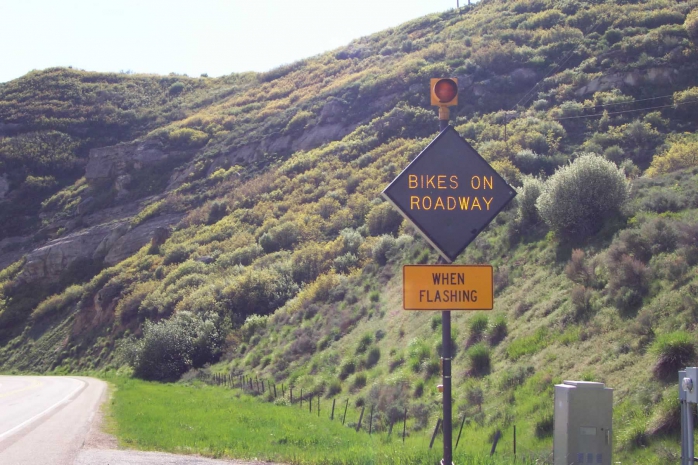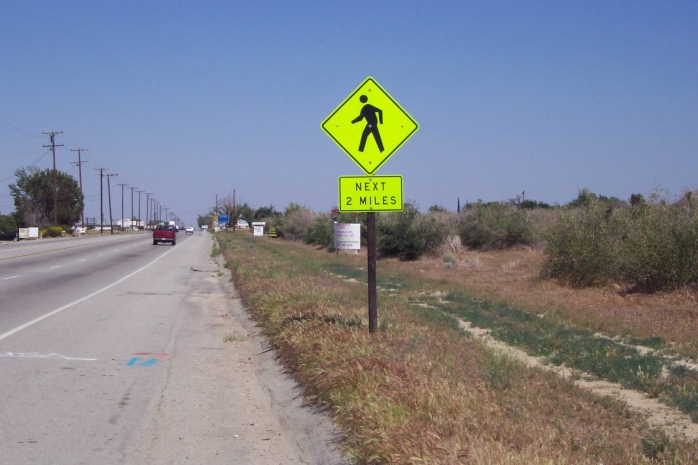
Photo Credit: http://www.pedbikeimages.org/Dan Burden
By Karin Valentine Goins, MPH, Program Director, Division of Preventive and Behavioral Medicine, University of Massachusetts Medical School
Editor’s Note: This is the second in a three-part series covering the Capabilities for Public Health Agency Involvement in Land Use and Transportation Decision Making to Increase Active Transportation Opportunity from the UMass Worcester Prevention Research Center. Read the first post here.
Many public health stakeholders wish to increase active transportation opportunities in their communities. This is possible when public health agencies are involved in decision making about the local built environment.
The first post in this series described the process of developing ten capabilities that can help increase involvement. The capabilities are most useful for midsize and smaller local health departments (LHDs), which typically have the greatest resource constraints. They particularly benefit departments that have prioritized physical activity and active transportation but have little experience working on built environment issues.
Directors, mid-level managers, and front-line staff can use the tool for activities such as workplan development, monitoring, and reporting. The capabilities offer a menu of options rather than a prescriptive, step-by-step listing of actions.
An expert panel of practitioners identified each capability as feasible for LHDs with the fewest resources, moderate resources, or the most resources. The first post described the capabilities designated for LHDs with the fewest resources, and this second installment describes the four capabilities identified as feasible for departments with moderate resources:
Capability: Public outreach to community
Definition: Community education, engagement, mobilization, promotion; includes participation on community coalitions.
Tasks:
Educate residents about community design and health, implications of municipal decisions, best practices, and advocacy strategies to build and demonstrate public support: Demonstrating community support for built environment changes is critical in order for policy makers to make an ongoing commitment to active transportation.
- Participate in or lead community design initiatives of community health coalitions: Health coalitions can be in the vanguard of community support for built environment changes that support active transportation.
- Assist community in engaging with municipal departments responsible for land use and transportation: Once they develop relationships with municipal partners, LHDs can serve as a bridge between their community partners and these typically less familiar departments.
- Lead or participate in Safe Routes to School initiative or Walk or Bike to School Days: School-related active transportation can include community-engaged events as well as municipal infrastructure change and traffic safety enforcement.
- Assist neighborhood groups working on place-based initiatives to improve walking or bicycling environment: LHDs can support efforts by community members to address specific problems in locations important to them.
- Promote and track utilization of pedestrian and bicycle facilities: There is often no monitoring to confirm behavior change after pedestrian or bicycle facilities get built. LHDs can leverage their strengths in community collaboration and data collection to contribute valuable information about use.

Photo Credit: http://www.pedbikeimages.org/Dan Burden
Capability: Policy maker education
Definition: Increase awareness among officials and develop champions regarding impact on health of land use and transportation decisions.
Tasks:
- Inform elected and appointed officials of news and information on built environment and health through communications and presentations: Officials have to keep track of a lot of information. LHDs can become a reliable source for new developments about the built environment-health connection.
- Conduct training for elected officials about built environment impact on physical activity and health: LHDs can conduct trainings themselves or bring in outside experts to make the fiscal and health case supporting investment in active transportation.
- Organize trainings for land use and transportation staff and board volunteers on physical activity and health impact of their decisions: Staff and volunteers may benefit from information about how their decisions at the local level can enhance or negatively affect opportunities for physical activity and about best practices.
- Institute built environment as regular topics on health board agenda: Regular exposure can help boards see health impact of the built environment as part of their role in an era of shifting public health responsibilities.
Capability: Plan and policy development
Definition: Active participation in development of plan or policy.
Tasks:
- Participate in policy development or update such as comprehensive/master plan, area or corridor plan, zoning ordinance, active design standards, or goal-setting to improve walking or livability index score: This is a step beyond reviewing and commenting. An LHD could participate in the group conceiving and fleshing out a plan or policy.
- Orient health boards to the potential for health regulations addressing pedestrian and bicycle accommodation: Boards vary in powers, but the impact of built environment on health gives them leverage in potential regulation.
- Provide local health-related data such as epidemiological or health services statistics to support plan or policy development: The data LHDs routinely collect and analyze can serve as a valuable new information source for planners.
Capability: Project development and design review
Definition: Input on transportation project design from early stages and on development projects at pre-application.
Tasks:
- Participate in analysis of alternatives for transportation projects: Infrastructure improvement projects often include evaluation of multiple options. LHDs can support meaningful inclusion of active transportation modes such as walking and bicycling.
- Assist with public engagement process for transportation planning and projects: LHDs often have ongoing relationships with community partners that they can leverage to ensure community voices are heard.
- The final post in this series will focus on three capabilities for departments with the most resources.
Do you have a story you want to share about success (or struggles) with a capability or tasks? Contact Karin Valentine Goins at [email protected].








